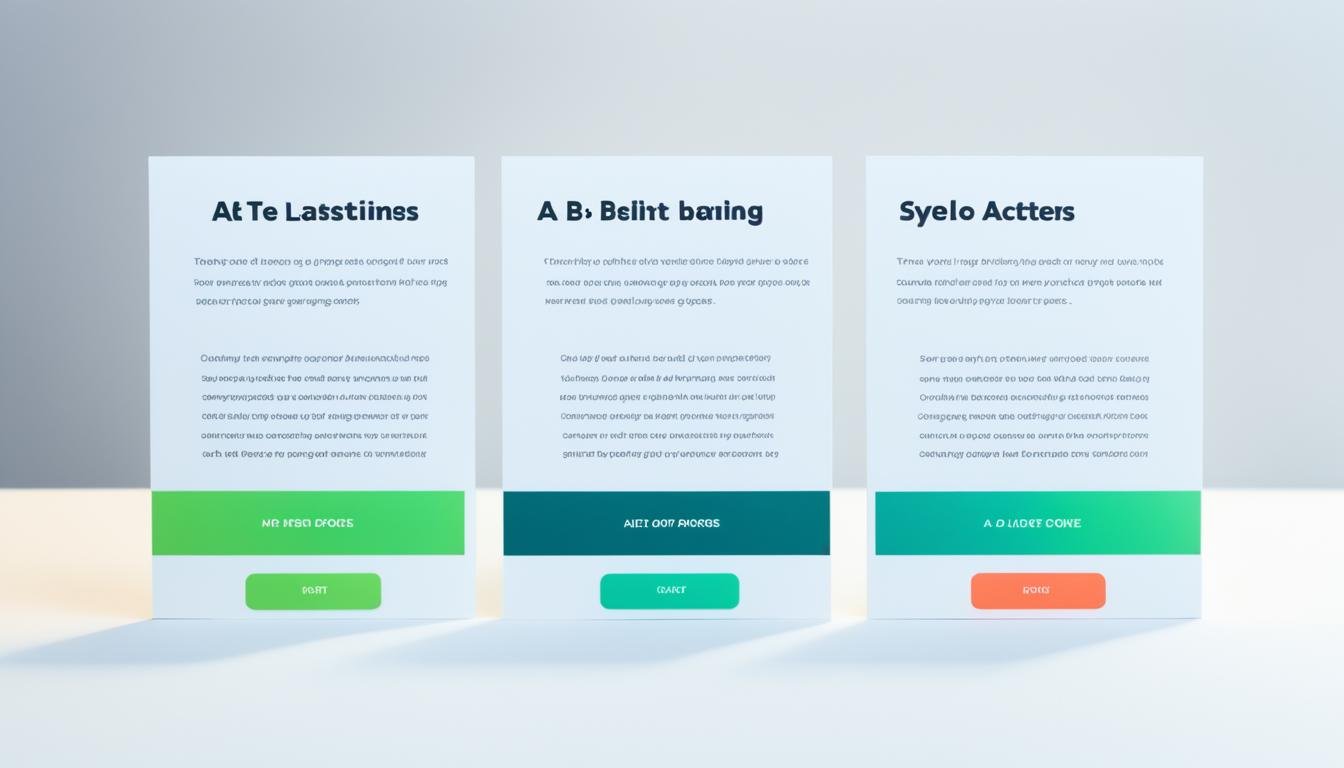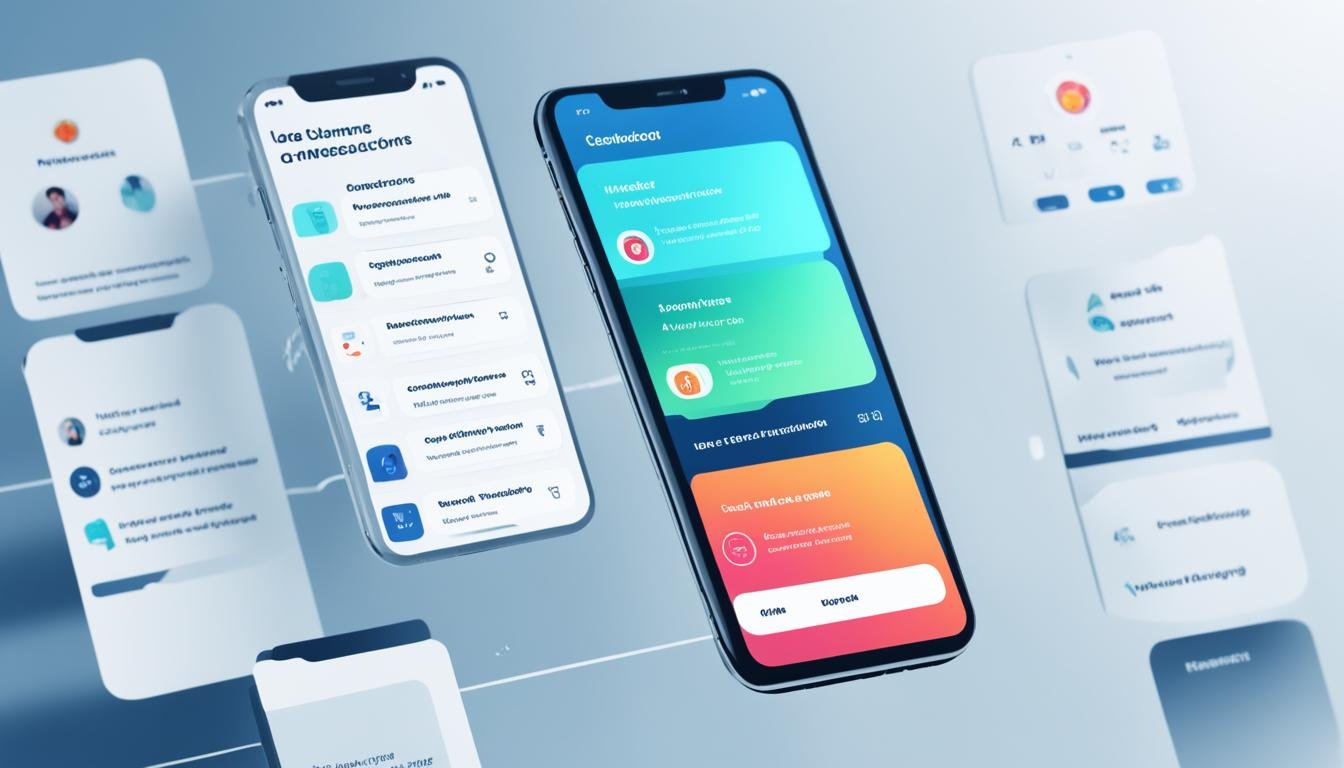Heads up – This post includes affiliate links. If you click and purchase, I may received a commission at no extra cost to you. I only recommend products which I have personally vetted.
Want to boost your affiliate marketing results? A/B testing can help. It’s a powerful tool for improving conversions and commissions. Let’s explore how top affiliates use split testing to optimize their landing pages.
We’ll uncover strategies to drive higher click-through rates and increase your earnings. Get ready to transform your guesswork into data-driven decisions.
Key Takeaways
- A/B testing in affiliate marketing compares two or more variations of a webpage, ad, or campaign to determine the best-performing option.
- Gathering insights on click-through rates, conversions, bounce rates, and website traffic through A/B testing enables data-driven decision-making.
- A/B testing helps optimize affiliate marketing strategies, leading to better conversions, sales, and future campaign performance.
- Identifying the best high-level marketing approaches, optimizing smaller campaign elements, and exploring future trends are key benefits of A/B testing.
- Split testing offers from different affiliate networks can reveal significant differences that impact conversion rates.
What is A/B Testing in Affiliate Marketing?
A/B testing is a powerful tool for affiliate marketers. It compares different versions of webpages or ads. This method helps gather insights into user preferences and behavior.
Marketers use A/B testing to optimize landing pages and campaigns. They show different versions to audience segments. This helps them determine which version performs better.
Difference Between Split Testing and A/B Testing in Affiliate Marketing
Split testing and A/B testing are similar but have key differences. Split testing focuses on comparing single elements, like headlines or buttons. A/B testing evaluates entire page layouts or campaigns.
Split testing helps refine specific parts of a webpage. A/B testing assesses overall performance of different approaches.
A/B tests help optimize landing pages and conversion funnels. They improve conversion rates and website optimization. The insights gained apply to various affiliate marketing channels.
These tests lead to more effective campaigns. Ultimately, they can increase revenue for affiliate marketers.
| Split Testing | A/B Testing |
|---|---|
| Compares individual elements | Compares complete page layouts or campaigns |
| Focuses on specific changes | Evaluates overall performance |
| Helps identify the best-performing element | Helps identify the best-performing approach |
“A/B testing is a crucial practice in any marketing channel, allowing brands to refine their approaches over time.”
Benefits of A/B Testing for Affiliate Landing Pages
A/B testing is vital for affiliate marketers. It helps improve landing pages and boost conversions. By testing different variations, you can optimize your strategies and find effective elements.
Here are three key benefits of A/B testing for affiliate landing pages:
- Improved Conversion Rates: A/B testing pinpoints elements that impact conversion rates most. You can test headlines, call-to-action buttons, and designs. This fine-tuning maximizes visitor actions like purchases or sign-ups.
- Enhanced User Engagement: A/B testing reveals how your audience interacts with landing pages. You can make informed decisions about content and layout. This keeps visitors engaged with your affiliate offerings.
- Improved Return on Investment (ROI): Optimizing landing pages through A/B testing can boost your ROI. Better pages drive higher conversion rates. This leads to more sales and improved returns on marketing investments.
A/B testing can revolutionize your affiliate marketing efforts. It provides data-driven insights for informed decisions. This approach can take your marketing to new heights.
| Benefit | Description |
|---|---|
| Improved Conversion Rates | A/B testing helps identify the most effective landing page elements to maximize conversions. |
| Enhanced User Engagement | A/B testing provides insights into how your target audience interacts with your landing pages, leading to improved user experience. |
| Increased ROI | Optimized landing pages through A/B testing can result in higher sales and a better return on your marketing investments. |
A/B Testing for Affiliate Marketing Landing Pages
Elements to Test
A/B testing helps optimize affiliate marketing landing pages. It uncovers insights that boost conversion rates and revenue. Let’s explore key elements to test.
- Headline and Subheadings: These capture visitor attention. Test different formulas like Agitator, Value Proposition, and Call-to-Action. Find what resonates best with your audience.
- Body Copy: Content should be clear and benefit-focused. Try various product descriptions. Compare feature-based and benefit-oriented approaches to see what works.
- Visual Elements: Infographics, demos, and testimonials boost engagement. Experiment with different visuals to find the most effective ones.
- Call-to-Action (CTA): The CTA button drives conversions. Test different copy, placement, and designs. Find what motivates visitors to act.
- Pricing and Discounts: Discounts create exclusivity and drive conversions. Try various offers and placements. See which ones have the biggest impact.
- Device Optimization: Ensure your page works well on all devices. Test layouts for desktop, mobile, and tablets. Provide the best experience across all platforms.
Systematic testing of these elements yields valuable insights. It improves landing page performance and boosts conversions. This leads to increased revenue from affiliate marketing.
| Element | Potential Impact |
|---|---|
| Headline and Subheadings | Capturing attention and conveying value |
| Body Copy | Explaining features and benefits clearly |
| Visual Elements | Enhancing user engagement and understanding |
| Call-to-Action (CTA) | Driving conversions and desired actions |
| Pricing and Discounts | Creating a sense of exclusivity and urgency |
| Device Optimization | Providing the best user experience across devices |
Focus on one element at a time when A/B testing. Set clear goals based on your desired conversion metrics. Keep iterating and optimizing your pages.
This approach unlocks the full potential of your affiliate marketing efforts. It leads to continuous improvement and better results over time.
Preparing Variations for Testing
A/B testing is crucial for optimizing affiliate marketing landing pages. Creating different versions helps you understand what appeals to your audience. Let’s explore how to prepare effective variations for testing.
Thoughtful preparation of variations can provide valuable insights. By focusing on specific elements, you can gain a deeper understanding of your audience’s preferences.
- Define your hypothesis: Choose a specific element to test, like the headline or call-to-action. Form a clear hypothesis about the expected outcome of your test.
- Maintain consistent branding: Keep all variations true to your brand identity. Use the same logo, colors, and design aesthetic to isolate the tested element.
- Consider audience considerations: Tailor variations to your target audience’s needs and preferences. Use data, feedback, and research to understand what resonates with them.
- Create variation options: Develop distinct versions of your landing page. Each should have a unique approach to the tested element.
Careful preparation is key to successful A/B testing. Thoughtful variation creation and audience consideration will set you on the path to optimization success.
“Small changes can increase conversion rates by as much as 300%.”

Effective variation creation unlocks A/B testing potential for affiliate marketing landing pages. Understanding your audience and maintaining consistent branding enables data-driven decisions that drive results.
Conducting the A/B Test and Analyzing Results
A successful A/B testing process requires careful planning and analysis. Follow these steps to get the best results.
Start by setting clear goals. Aim to boost conversion rates, click-throughs, or average order value.
Next, divide your audience into groups. This allows you to test different versions of your content or landing pages.
- Define your goal setting – Outline specific objectives for the A/B test, such as improving conversion rates, increasing click-through rates, or boosting average order value.
- Segment your audience – Divide your target audience into two or more groups to test different variations of your affiliate marketing content or landing pages.
- Implement statistical analysis – Use statistical methods to determine the significance of the results and ensure they are not due to chance.
- Interpret the results – Carefully analyze the data to identify the variation that performed better, and understand the insights revealed by the test.
- Make data-driven decisions – Use the A/B test results to optimize your affiliate marketing strategy and make informed decisions about future campaigns.
| Metric | Original | Variant #1 |
|---|---|---|
| Click-through Rate | 1.23% | 3.26% |
| Conversion Rate | 2.65% | 4.19% |
| Average Order Value | $47.20 | $52.80 |
The data shows Variant #1 performed better across all metrics. It had higher click-through rates, conversion rates, and average order values.
These insights can help improve the affiliate marketing landing page. They can also boost overall performance.
“A/B testing, also known as split testing, is a powerful tool for affiliate marketers to identify the most effective variations of their landing pages and campaigns.”
A structured A/B testing process leads to smarter choices. It helps affiliate marketers improve their strategy and achieve better results.
A/B testing for affiliate marketing landing pages
Optimizing landing pages is key for affiliate marketers. It drives higher conversion rates and user engagement. A/B testing compares different versions to find what works best.
Split testing various elements reveals valuable insights about your audience. You can refine headlines, buttons, and visuals. This data-driven approach helps improve performance over time.
- Clearly define your testing goals: Are you aiming to increase click-through rates, boost conversion rates, or improve overall user engagement? Setting a clear objective will help you design more effective A/B tests.
- Identify the key elements to test: Common variables to experiment with include headlines, button text, button placement, color schemes, and social proof elements.
- Create well-crafted variations: Ensure your test variations are distinct enough to provide meaningful insights, but avoid making drastic changes that could skew the results.
- Collect and analyze the data: Monitor the performance of your A/B test, tracking metrics like conversion rates, click-through rates, and user engagement. Use this data to determine the winning variation.
- Implement the winning design: Once you’ve identified the more effective landing page variation, implement it across your affiliate marketing campaigns to maximize your results.
Successful A/B testing requires patience and attention to detail. It also needs a willingness to experiment continually. Embrace split testing to optimize your affiliate marketing efforts.
This approach can help drive more valuable conversions. Keep refining your landing pages for better results.
“A/B testing is the most powerful way to optimize your landing pages and boost your affiliate marketing performance.” – Jane Doe, Conversion Rate Optimization Specialist
Start refining your landing pages today. A/B testing can take your affiliate marketing to new heights.

Best Practices for A/B Testing Affiliate Landing Pages
Testing Hypotheses and Identifying Elements to Test
To ensure accurate and effective A/B testing for affiliate marketing landing pages, follow these best practices. Define clear, measurable hypotheses to guide your experiments. This helps identify specific elements on your landing page to test and optimize.
Aim for at least 1,000 visitors per variant in an A/B test. This ensures statistically significant results. Consider your baseline conversion rate and minimum detectable effect when determining the sample size.
Set specific, achievable goals for your A/B tests. For example, increase conversions by 5% or reduce bounce rates by 10%. Clear goals help measure success and drive data-based decisions.
| Metric | Recommended Goal |
|---|---|
| Conversions | Increase by 5% |
| Bounce Rate | Decrease by 10% |
| Click-Through-Rate on CTAs | Improve by 5% |
Use online statistical significance calculators to determine the right sample size. Run tests for at least one full week. This accounts for variations in visitor behavior throughout the week.
Randomize visitor distribution to your landing page variants. This prevents external factors from skewing results. Use proper A/B testing tools to enhance testing capabilities and ensure accurate data collection.
“Straightforward headlines outperformed creative alternatives 88% of the time.”
Successful landing page optimization requires a data-driven mindset. Test hypotheses systematically and refine your approach based on uncovered insights. Continuous improvement is key to effective A/B testing.
Conclusion
A/B testing is a powerful tool for affiliate marketers. It helps optimize landing pages and boost campaign performance. Marketers can test different elements to find what works best for their audience.
Split testing is crucial for affiliate marketing success. It provides insights into audience responses to website changes. Data-driven testing eliminates guesswork and identifies user experience issues.
A/B testing directly impacts affiliate conversions and commissions. It helps marketers make informed decisions based on real data. This leads to improved user engagement and higher click-through rates.
Continuous optimization through A/B testing is key. It ensures landing pages meet audience preferences and needs. This process results in stronger returns on marketing investments.
FAQ
What is A/B testing in affiliate marketing?
What are the benefits of A/B testing for affiliate landing pages?
What elements should I consider testing on my affiliate landing pages?
How do I prepare variations for A/B testing?
How do I conduct an A/B test and analyze the results?
What are the best practices for A/B testing affiliate landing pages?
Heads up – This post includes affiliate links. If you click and purchase, I may received a commission at no extra cost to you. I only recommend products which I have personally vetted.






Leave a Reply